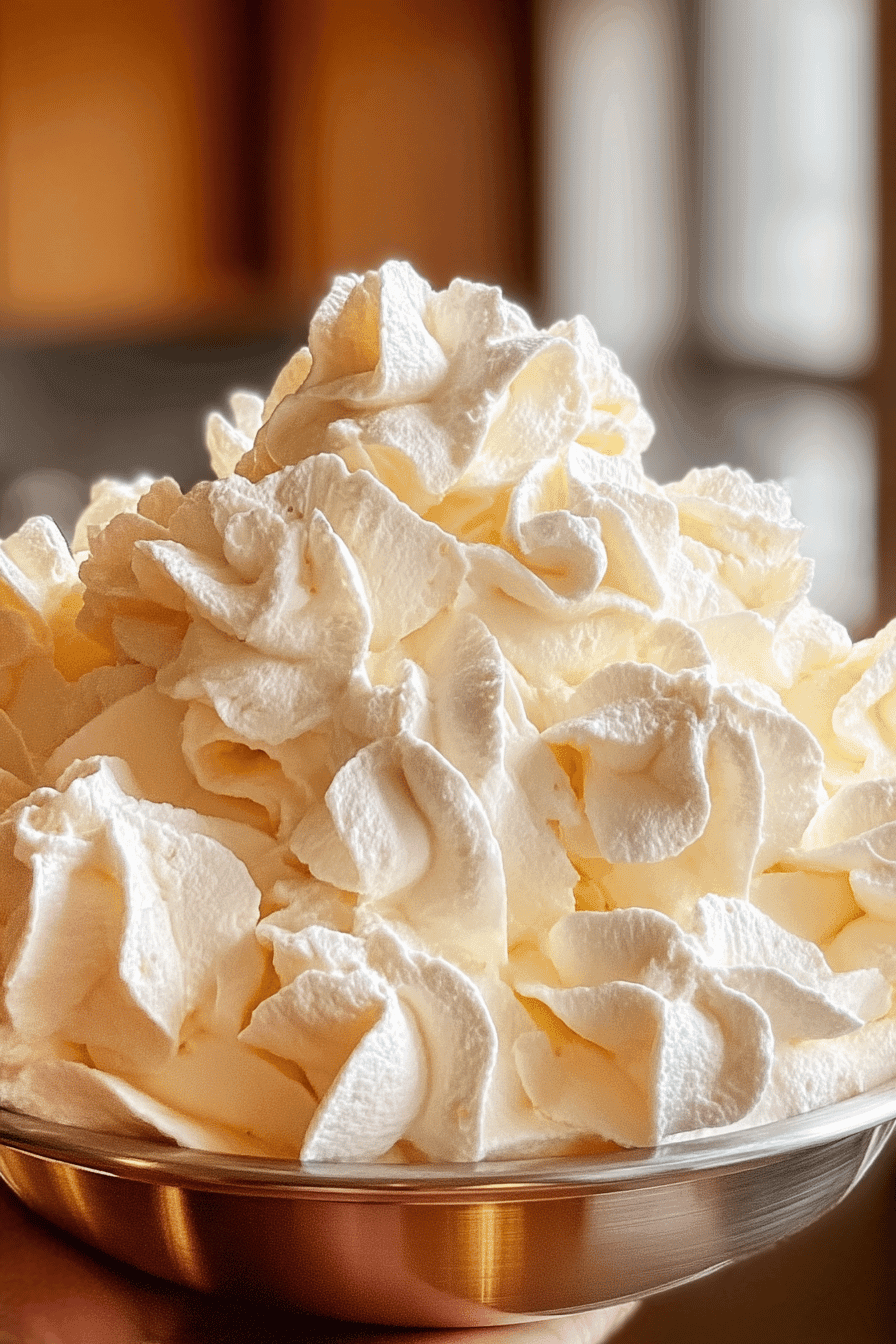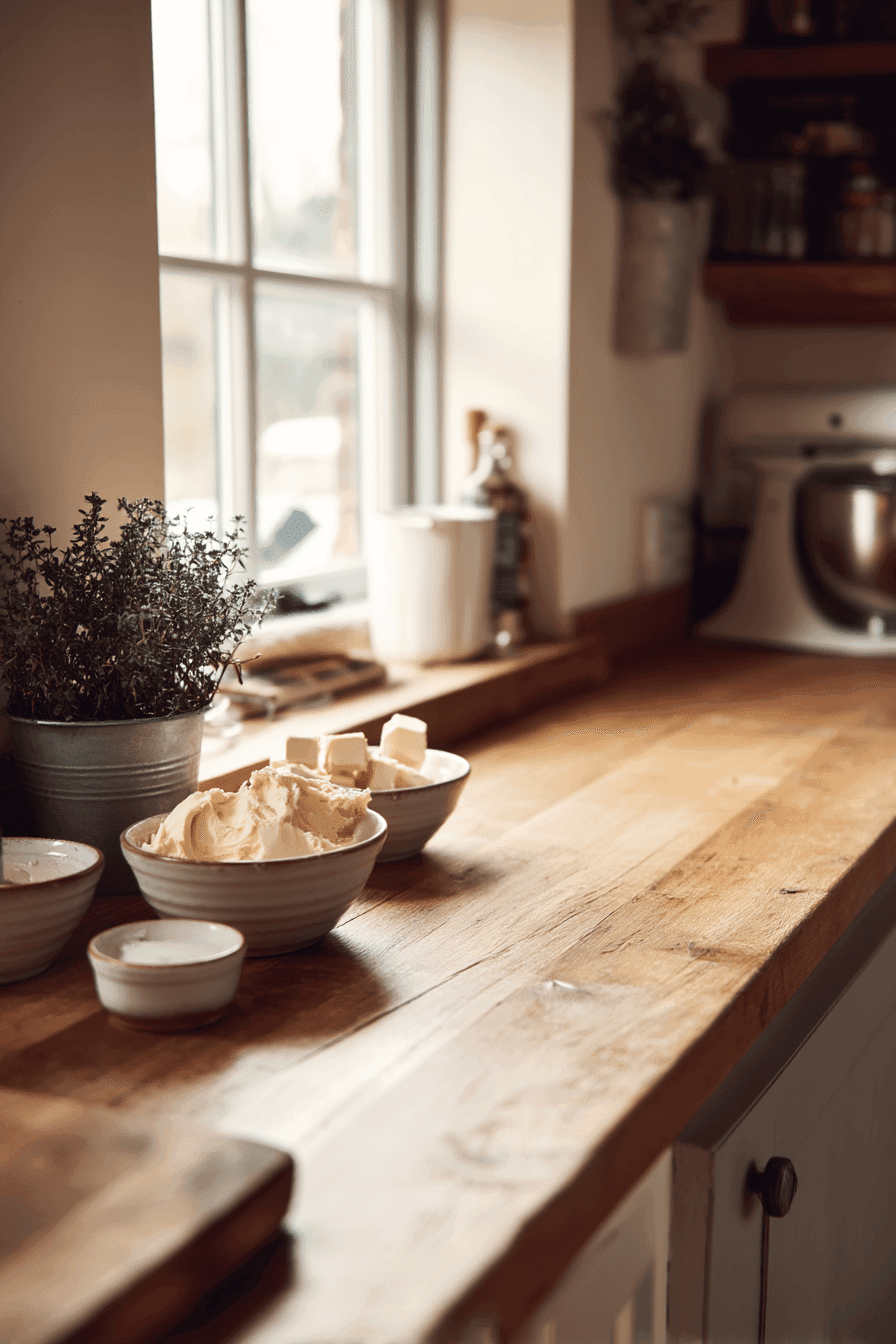Benefits and Advantages of Italian Meringue Buttercream
Italian meringue buttercream is a standout frosting choice thanks to its smooth, silky texture and excellent stability. By combining the light and airy character of Italian meringue with the richness of butter, this buttercream yields a creamy, fluffy result that’s both easy to spread and ideal for decorative piping. Its preparation method involves whipping hot sugar syrup into egg whites, which stabilizes the meringue and creates a robust structure that resists melting even in warmer climates.
Compared to traditional buttercreams, it often contains fewer added fats, making it lighter on the palate while maintaining decadence. Italian meringue buttercream’s adaptability is another advantage it can be tailored for vegan or low-calorie diets by substituting certain ingredients without sacrificing texture or flavor. This frosting delivers a less greasy mouthfeel with a silky finish, enhancing the overall experience of cakes, cupcakes, and other desserts. Its balance of elegance, taste, and resilience makes it a preferred choice for both amateur bakers and professionals aiming for refined results.
Jump To
- 1. Benefits and Advantages of Italian Meringue Buttercream
- 2. Essential Ingredients for Italian Meringue Buttercream
- 3. Dietary Substitutions to Customize Your Italian Meringue Buttercream
- 4. How to Prepare the Perfect Italian Meringue Buttercream: Step-by-Step Guide
- 5. Advanced Tips and Variations
- 6. How to Store Italian Meringue Buttercream: Best Practices
- 7. Nutritional Value of Italian Meringue Buttercream
- 8. FAQs: Frequently Asked Questions About Italian Meringue Buttercream
- 9. How to Make Smooth and Creamy Italian Meringue Buttercream at Home
Essential Ingredients for Italian Meringue Buttercream
- 4 large egg whites (room temperature)
- 1⅓ cups granulated sugar (267 g)
- ⅓ cup water (79 mL)
- ¼ teaspoon salt (optional)
- ¼ teaspoon cream of tartar (0.84 g)
- 16 ounces (454 g) unsalted butter, room temperature and cut into 1-inch pieces
- 1 teaspoon pure vanilla extract (optional)
Each component plays a vital role: sugar is heated to form a syrup that stabilizes the meringue, egg whites provide volume and structure, and butter adds richness and creaminess. For vegan adaptations, aquafaba replaces egg whites, while plant-based butters replicate butter’s texture. This recipe naturally suits gluten-free diets and can be adjusted with sugar substitutes like erythritol or stevia for lower-calorie options. Quality of ingredients, especially butter and vanilla extract, influences the frosting’s taste and mouthfeel, making careful selection important for best results.
Dietary Substitutions to Customize Your Italian Meringue Buttercream
Italian meringue buttercream easily adapts to various dietary preferences and ingredient restrictions:
- Vegan Alternatives: Swap egg whites for aquafaba, the liquid from canned chickpeas, which whips similarly to egg whites, and replace unsalted butter with plant-based butters such as coconut or almond varieties. This keeps the frosting smooth and stable.
- Gluten-Free: The standard recipe is naturally gluten-free; just verify that any added flavorings or decorations do not contain gluten.
- Low-Calorie or Sugar-Free Versions: Use sugar replacements like erythritol, monk fruit, or stevia in place of granulated sugar. Adjust cooking times as needed to achieve similar syrup consistency.
- Dairy-Free Options: Substitute traditional butter with dairy-free butter alternatives, ensuring they are softened and whipped properly to maintain creamy texture.
- Flavor Customization: Incorporate various natural extracts, citrus zests, or natural food coloring to create personalized flavors and colors while preserving texture.
These substitutions allow you to customize the Italian meringue buttercream without losing its signature lightness and stability.
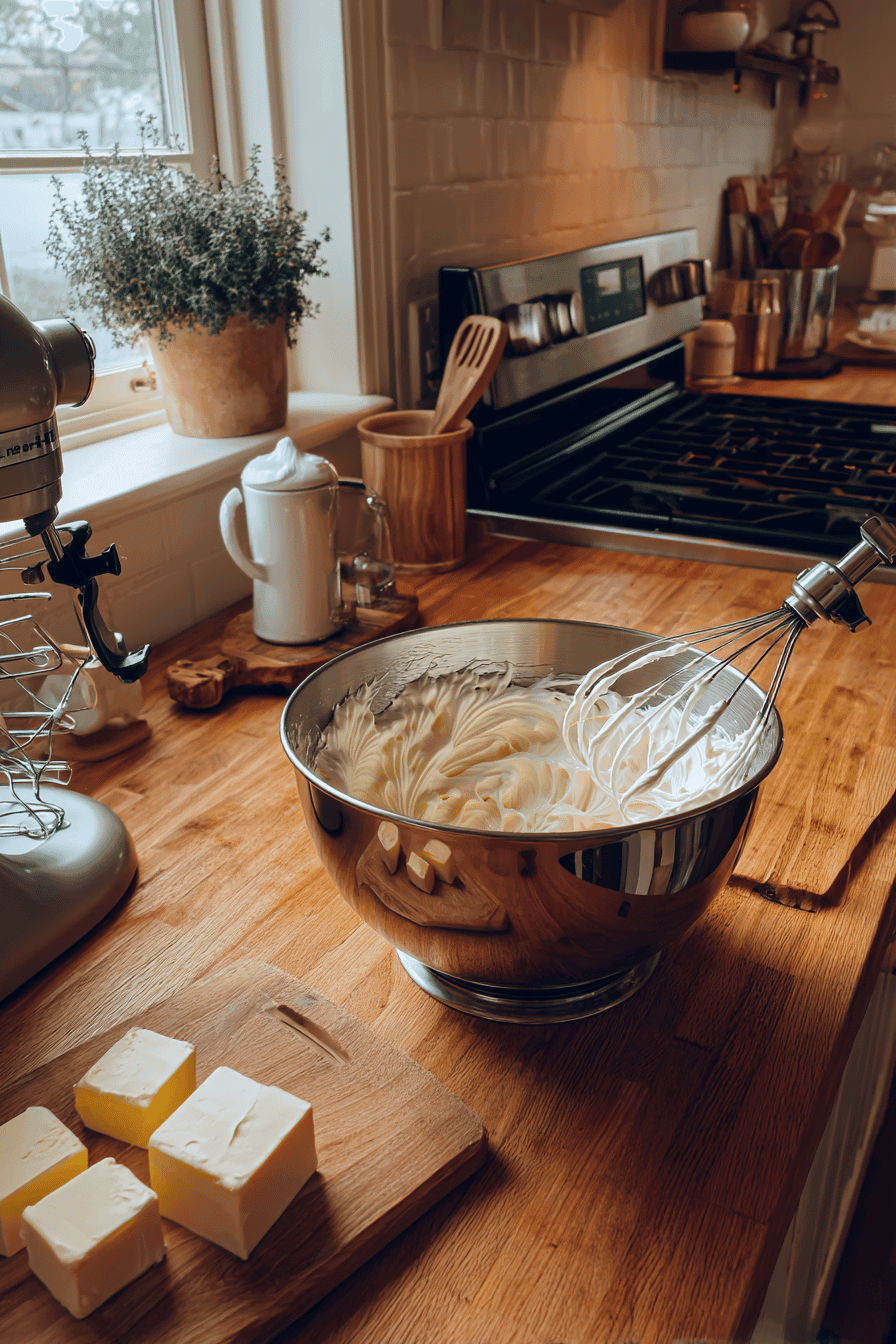
How to Prepare the Perfect Italian Meringue Buttercream: Step-by-Step Guide
- Prepare Sugar Syrup: Combine granulated sugar and water in a saucepan. Heat over medium heat until the sugar fully dissolves and the syrup reaches 240°F (115°C), known as the soft-ball stage. Use a candy thermometer for accuracy. For lower-calorie versions, adjust accordingly using suitable sugar substitutes.
- Whip Egg Whites: In a clean bowl, beat egg whites with salt and cream of tartar until soft peaks form. For vegan frosting, use aquafaba whipped to soft peaks.
- Incorporate Hot Syrup: Slowly pour the hot syrup into the egg whites while whipping at low speed, then increase to high speed. Continue whipping until the mixture cools to room temperature and forms stiff, glossy peaks. Use a cold water bath to speed cooling if necessary.
- Add Butter Gradually: With a paddle attachment, add softened butter piece by piece, whipping continuously to create a smooth and creamy buttercream. If the mixture curdles or looks soupy, keep whipping; it will combine, or briefly chill and re-whip if needed.
- Mix in Flavorings: Add vanilla extract or any desired flavors and beat until fully incorporated and light. For color, warm a small portion with gel coloring before folding back in for even distribution.
- Storage and Use: Use immediately or store in an airtight container. If refrigerated, allow to come to room temperature and re-whip before use to restore texture.
This stepwise method ensures a perfectly balanced, silky Italian meringue buttercream that is ideal for frosting and decorating.
For additional guidance, visit How to make Italian meringue buttercream and explore Tips for perfect meringue frosting.
Advanced Tips and Variations
To create the smoothest and most stable Italian meringue buttercream, start with room temperature ingredients, especially the butter. This allows the butter to blend evenly, preventing lumps and curdling. Using a kitchen thermometer ensures the sugar syrup reaches the correct soft-ball stage (235–240°F or 113–116°C), which is crucial for stable meringue formation.
Experiment with flavors by gently folding in cocoa powder for a rich chocolate buttercream or incorporating pureed fruits like strawberry or raspberry for a fresh twist. Adding a small amount of cream of tartar or cornstarch during the meringue phase can increase stability, especially useful in warm climates. For a lighter taste, blend in some whipped cream or mascarpone cheese, adjusting the texture accordingly.
Vegan versions can benefit from trying different plant-based butters such as coconut or almond butter, which maintain creaminess and flavor. To add vibrant colors, incorporate gel food coloring in a small warmed portion of buttercream before folding back into the batch for an even hue without affecting texture. Avoid over-whipping after combining butter and meringue to prevent separation or a soupy consistency. These tips allow customization of Italian meringue buttercream for both beginner cooks and professional decorators.
How to Store Italian Meringue Buttercream: Best Practices
Proper storage helps maintain Italian meringue buttercream’s creamy texture and sweet flavor. If you plan to use it within a few days, store the buttercream in an airtight container in the refrigerator. It will firm up when cold, so before using, bring it back to room temperature and whip briefly to restore its smooth consistency.
For longer term storage, freezing is effective. Place the buttercream in a well-sealed container or freezer bag with minimal air to prevent freezer burn. Thaw frozen buttercream overnight in the fridge and whip it gently before use. Avoid heating buttercream directly to prevent melting or separation. These storage methods preserve the buttercream’s stability and freshness for decorating cakes, cupcakes, and other desserts.
Handling Italian meringue buttercream with care during storage keeps it ready for beautiful, delicious applications whenever you need.
Nutritional Value of Italian Meringue Buttercream
| Nutrient | Amount per Batch | Notes |
|---|---|---|
| Calories | Approximately 436 kcal | Energy mainly from fats and sugar |
| Carbohydrates | 27 g | Primarily sugars in syrup and buttercream |
| Protein | 2 g | From egg whites |
| Fat | 37 g | Saturated fat: 23 g, from butter |
| Cholesterol | 98 mg | Mostly from butter and eggs |
| Sodium | 26 mg | Low sodium content |
| Sugar | 27 g | Moderate sweetness for dessert use |
| Vitamin A | 1134 IU | From butter contributing to immune function |
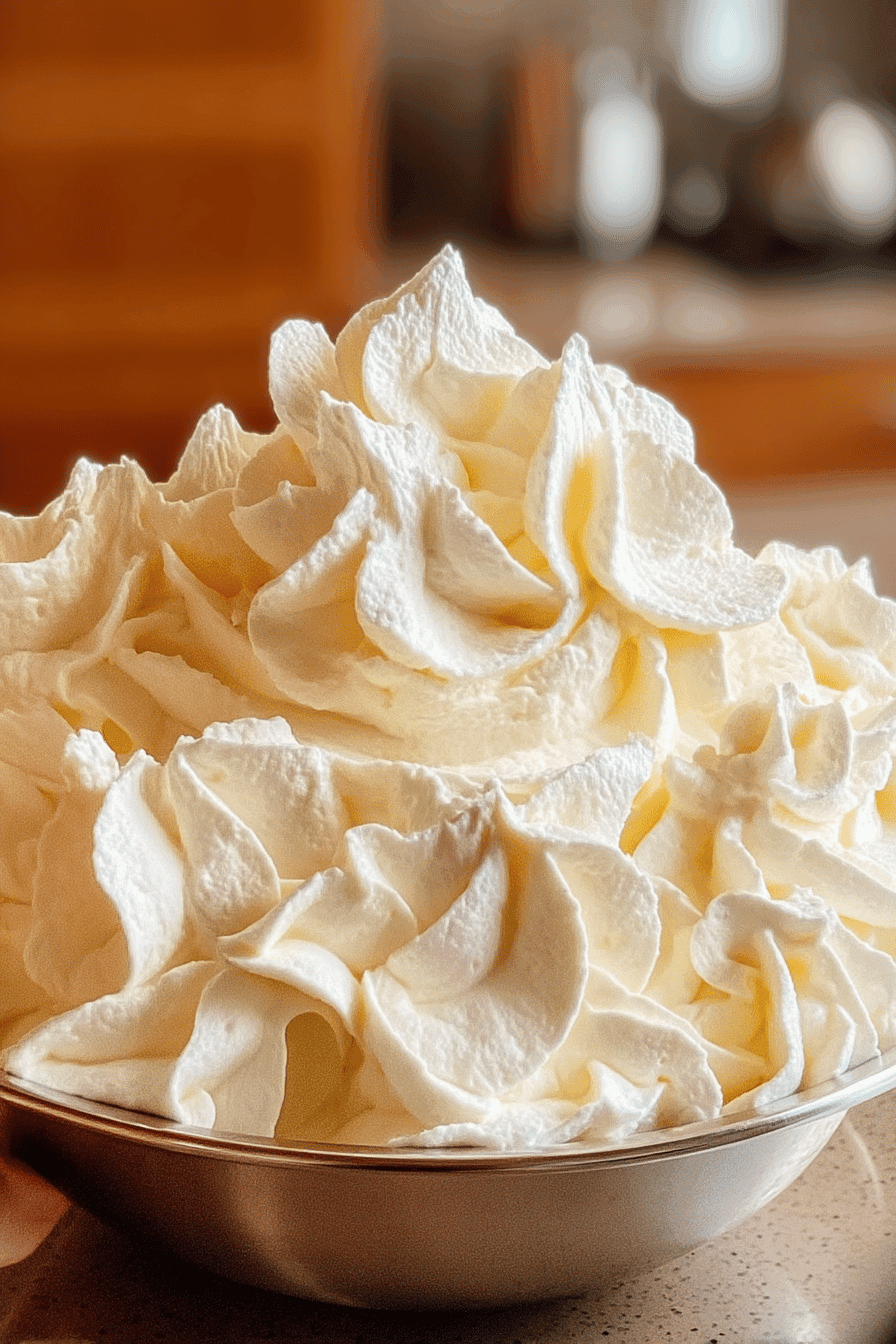
FAQs: Frequently Asked Questions About Italian Meringue Buttercream
What is Italian meringue buttercream and how is it made?
Explain that Italian meringue buttercream is a frosting made by whipping egg whites with hot sugar syrup cooked to about 240ºF, then incorporating softened butter and flavorings. Describe the basic process steps simply and clearly to help beginners understand. Mention the silky, light texture and moderate sweetness that distinguishes it from other buttercreams. Including keywords naturally and providing an overview satisfies user intent for “what is” and “how to make” queries.
What ingredients do I need to make Italian meringue buttercream?
List essential ingredients like fresh or pasteurized egg whites, granulated sugar, unsalted softened butter, water, vanilla extract, and salt. Briefly note why fresh or pasteurized egg whites matter for safety and texture. Include notes on optional flavorings and food coloring methods to cover common follow-up questions. This directly addresses ingredient-related searches while avoiding fluff.
How can I tell if my Italian meringue buttercream has the right texture and consistency?
Describe the silky, marshmallow-like look and the slight deflation after adding butter. Explain troubleshooting steps if it becomes runny, such as chilling briefly and whipping again. Include how the meringue should be glossy and white before adding butter. This answers a frequent user concern and helps ensure a good final product, improving engagement and trust.
How long does Italian meringue buttercream last and how should I store it?
Provide natural storage advice—keeping it refrigerated for about a week, freezing for up to two months, and bringing it to room temperature with re-whipping before use. Cover safe room temperature times to address health concerns. This satisfies common questions about preparation timing and food safety, which users often ask.
Can I add colors and flavors to Italian meringue buttercream without affecting its texture?
Share effective techniques such as adding flavorings at the end of mixing and using gel food coloring concentrated in a small warmed buttercream portion for vivid colors. Note that liquid colors may dilute the texture. Addressing how to personalize the buttercream prevents user frustration and supports creativity, which many searchers seek.
—
These questions are ordered from general understanding to practical tips and common challenges, naturally incorporating keywords like “Italian meringue buttercream,” “ingredients,” “texture,” “storage,” “color,” and “flavorings.” Answer guidance focuses on clarity, addressing user concerns, and opportunities to link to related recipes or troubleshooting content on your site.
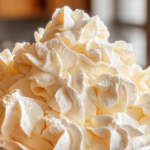
How to Make Smooth and Creamy Italian Meringue Buttercream at Home
- Total Time: 35-40 minutes
- Yield: Approximately 3 cups buttercream 1x
- Diet: Vegetarian
Description
🍰 Learn how to make smooth and creamy Italian Meringue Buttercream that’s perfect for decorating cakes and cupcakes.
✨ This frosting offers a light, silky texture with moderate sweetness and excellent stability, great for warm environments.
Ingredients
4 large egg whites (room temperature)
1⅓ cups granulated sugar (267 g)
⅓ cup water (79 mL)
¼ teaspoon salt (optional)
¼ teaspoon cream of tartar (0.84 g)
16 ounces (454 g) unsalted butter, room temperature and cut into 1-inch pieces
1 teaspoon pure vanilla extract (optional)
Instructions
1. Separate egg whites from yolks, ensuring no yolk traces remain.
2. Beat egg whites with salt and cream of tartar in a clean stand mixer bowl until soft peaks form, gradually adding ⅓ cup sugar from the total.
3. In a medium pot, combine remaining sugar and water. Cover and bring to boil until sugar fully dissolves, then uncover and boil until syrup reaches 235–240°F (113–116°C).
4. Slowly drizzle hot syrup into whipped egg whites while mixing on low speed, then increase to high speed and whip until meringue cools to room temperature and forms stiff peaks.
5. Switch to paddle attachment and add room temperature butter gradually, one tablespoon at a time, mixing continuously until smooth and creamy. If curdled, keep whipping or chill briefly and re-whip.
6. Add vanilla extract if desired and beat until fully incorporated and light.
7. Optionally add gel food coloring warmed with a small amount of buttercream and fold in for even color.
Notes
🍳 Separate eggs cold but whip whites at room temperature for maximum volume.
🔪 Ensure all bowls and tools are grease-free using lemon juice or vinegar.
🌡️ Use a medium pot and candy thermometer to accurately monitor sugar syrup temperature to prevent graininess.
- Prep Time: 15-25 minutes
- Cooling and mixing time: 10-15 minutes
- Cook Time: 10 minutes
- Category: Frosting
- Method: Whipping
- Cuisine: International
Nutrition
- Serving Size: Approximately 2 tablespoons
- Calories: 436
- Sugar: 27 g
- Sodium: 26 mg
- Fat: 37 g
- Saturated Fat: 23 g
- Carbohydrates: 27 g
- Protein: 2 g
- Cholesterol: 98 mg
Keywords: Italian meringue buttercream, smooth frosting, creamy buttercream, cake decorating

